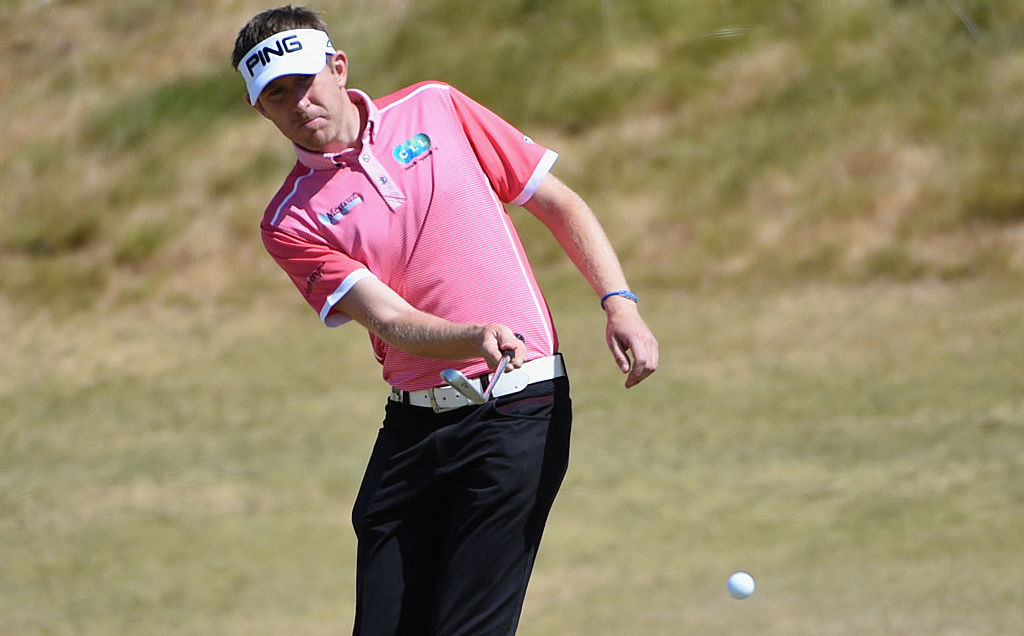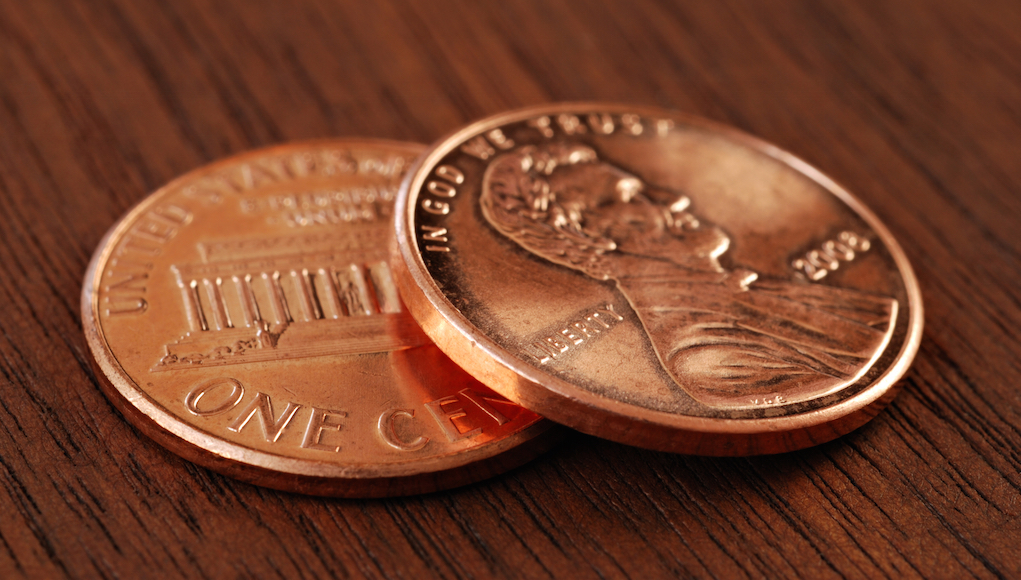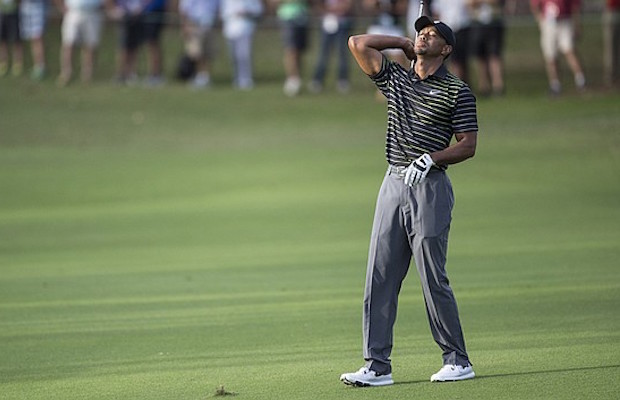Instruction
Fixes for the “chili dip” and “chipping yips”

Other than perhaps the shank, the most frustrating shot in golf is the chili dip; a chip shot that is supposed to go several yards but only moves 5 feet.
The frustration comes from that fact that golfers can often hit two great shots that cover some 400 yards. Get to within 10 yards of the green, and bam… you can only move the ball halfway to the green!
I call it the 2-4-6: Golfers turn two shots into four around the green and end up making a six! Here’s a couple quick tips to avoid this dreaded error:
Check your lie: You have to be able to see the grain in the grass a bit, especially on the bermuda grass found in the southern part of the United States. If it is against you, be careful. It is very easy to stub the club behind the golf ball into the grain. Here’s a quick tip for dealing with grain: If you’re chipping on an uphill slope, you are most definitely into the grain, so be careful. Start to look more closely at the grass that surrounds your ball around the green, and you will begin to see growth patterns.
Choose your club carefully: The lob wedge is the bane of the average golfer, and a dangerous tool in the wrong hands. Forget the flop shots you see pro golfers hit with their 60-degree wedges on television and play your own game. Like it or not, golf played along the ground is MUCH easier, so get used to playing bump-and-run shots. If I could give one tip and one tip only, it would be to play more shots along the ground when you’re around the green. Take your 8 or 9 iron the practice area and learn how to use those clubs to chip.
Set up: The set up for the chip shot is different than all other shots. The stance is quite narrow, the ball is back in the stance and the majority of your weight should be on your lead side. The set up that I see most golfers using is wrong, and here’s why: When you move the ball back in your stance and de-loft the golf club (move hands forward), you are exposing the leading edge of the club. This is very dangerous in chipping.
I see so many students who stub their club in the ground on chips simply because the leading edge is so exposed. Remember, if you de-loft the golf club, you must open the face a little. When you open the face, you are giving the bounce a chance to help you. And if you open the face, you need more club! So bump and run with a slightly open face, your hands ahead and keep your weight a little left.
The stroke: Simply put, “wristy” strokes are dangerous. Golfers can break their wrists a little going, back but NEVER coming through. Try this: Cup your right wrist back a little and practice chipping right handed (pictured above). Keep the wrist bent back all the way through the shot. Check your follow through and make sure that your wrist is still bent back when you finish.
Now, flatten your left wrist (even weaken your grip if it helps flatten your wrist) and practice chipping with your left hand only. See that your wrist stays flat all the way to the follow through of the shot. If you can’t get the feel for those drills, practice chipping cross handed (pictured below). It may help you to be less “wristy.”
One more thing: For those of you suffering from the chipping yips, try the putt-chip method. Stand close to the ball with the club straight up, like a putter. You’ll have the heel of the club off the ground and the toe down. Take your putting grip and make a putting stroke. You will be chipping off the toe of the club, so the ball will go a short distance. But it is almost yip proof!
As always, feel free to send a swing video to my Facebook page and I will do my best to give you my feedback.
Instruction
The Wedge Guy: Beating the yips into submission

There may be no more painful affliction in golf than the “yips” – those uncontrollable and maddening little nervous twitches that prevent you from making a decent stroke on short putts. If you’ve never had them, consider yourself very fortunate (or possibly just very young). But I can assure you that when your most treacherous and feared golf shot is not the 195 yard approach over water with a quartering headwind…not the extra tight fairway with water left and sand right…not the soft bunker shot to a downhill pin with water on the other side…No, when your most feared shot is the remaining 2- 4-foot putt after hitting a great approach, recovery or lag putt, it makes the game almost painful.
And I’ve been fighting the yips (again) for a while now. It’s a recurring nightmare that has haunted me most of my adult life. I even had the yips when I was in my 20s, but I’ve beat them into submission off and on most of my adult life. But just recently, that nasty virus came to life once again. My lag putting has been very good, but when I get over one of those “you should make this” length putts, the entire nervous system seems to go haywire. I make great practice strokes, and then the most pitiful short-stroke or jab at the ball you can imagine. Sheesh.
But I’m a traditionalist, and do not look toward the long putter, belly putter, cross-hand, claw or other variation as the solution. My approach is to beat those damn yips into submission some other way. Here’s what I’m doing that is working pretty well, and I offer it to all of you who might have a similar affliction on the greens.
When you are over a short putt, forget the practice strokes…you want your natural eye-hand coordination to be unhindered by mechanics. Address your putt and take a good look at the hole, and back to the putter to ensure good alignment. Lighten your right hand grip on the putter and make sure that only the fingertips are in contact with the grip, to prevent you from getting to tight.
Then, take a long, long look at the hole to fill your entire mind and senses with the target. When you bring your head/eyes back to the ball, try to make a smooth, immediate move right into your backstroke — not even a second pause — and then let your hands and putter track right back together right back to where you were looking — the HOLE! Seeing the putter make contact with the ball, preferably even the forward edge of the ball – the side near the hole.
For me, this is working, but I am asking all of you to chime in with your own “home remedies” for the most aggravating and senseless of all golf maladies. It never hurts to have more to fall back on!
Instruction
Looking for a good golf instructor? Use this checklist

Over the last couple of decades, golf has become much more science-based. We measure swing speed, smash factor, angle of attack, strokes gained, and many other metrics that can really help golfers improve. But I often wonder if the advancement of golf’s “hard” sciences comes at the expense of the “soft” sciences.
Take, for example, golf instruction. Good golf instruction requires understanding swing mechanics and ball flight. But let’s take that as a given for PGA instructors. The other factors that make an instructor effective can be evaluated by social science, rather than launch monitors.
If you are a recreational golfer looking for a golf instructor, here are my top three points to consider.
1. Cultural mindset
What is “cultural mindset? To social scientists, it means whether a culture of genius or a culture of learning exists. In a golf instruction context, that may mean whether the teacher communicates a message that golf ability is something innate (you either have it or you don’t), or whether golf ability is something that can be learned. You want the latter!
It may sound obvious to suggest that you find a golf instructor who thinks you can improve, but my research suggests that it isn’t a given. In a large sample study of golf instructors, I found that when it came to recreational golfers, there was a wide range of belief systems. Some instructors strongly believed recreational golfers could improve through lessons. while others strongly believed they could not. And those beliefs manifested in the instructor’s feedback given to a student and the culture created for players.
2. Coping and self-modeling can beat role-modeling
Swing analysis technology is often preloaded with swings of PGA and LPGA Tour players. The swings of elite players are intended to be used for comparative purposes with golfers taking lessons. What social science tells us is that for novice and non-expert golfers, comparing swings to tour professionals can have the opposite effect of that intended. If you fit into the novice or non-expert category of golfer, you will learn more and be more motivated to change if you see yourself making a ‘better’ swing (self-modeling) or seeing your swing compared to a similar other (a coping model). Stay away from instructors who want to compare your swing with that of a tour player.
3. Learning theory basics
It is not a sexy selling point, but learning is a process, and that process is incremental – particularly for recreational adult players. Social science helps us understand this element of golf instruction. A good instructor will take learning slowly. He or she will give you just about enough information that challenges you, but is still manageable. The artful instructor will take time to decide what that one or two learning points are before jumping in to make full-scale swing changes. If the instructor moves too fast, you will probably leave the lesson with an arm’s length of swing thoughts and not really know which to focus on.
As an instructor, I develop a priority list of changes I want to make in a player’s technique. We then patiently and gradually work through that list. Beware of instructors who give you more than you can chew.
So if you are in the market for golf instruction, I encourage you to look beyond the X’s and O’s to find the right match!
Instruction
What Lottie Woad’s stunning debut win teaches every golfer

Most pros take months, even years, to win their first tournament. Lottie Woad needed exactly four days.
The 21-year-old from Surrey shot 21-under 267 at Dundonald Links to win the ISPS Handa Women’s Scottish Open by three shots — in her very first event as a professional. She’s only the third player in LPGA history to accomplish this feat, joining Rose Zhang (2023) and Beverly Hanson (1951).
But here’s what caught my attention as a coach: Woad didn’t win through miraculous putting or bombing 300-yard drives. She won through relentless precision and unshakeable composure. After watching her performance unfold, I’m convinced every golfer — from weekend warriors to scratch players — can steal pages from her playbook.
Precision Beats Power (And It’s Not Even Close)
Forget the driving contests. Woad proved that finding greens matters more than finding distance.
What Woad did:
• Hit it straight, hit it solid, give yourself chances
• Aimed for the fat parts of greens instead of chasing pins
• Let her putting do the talking after hitting safe targets
• As she said, “Everyone was chasing me today, and managed to maintain the lead and played really nicely down the stretch and hit a lot of good shots”
Why most golfers mess this up:
• They see a pin tucked behind a bunker and grab one more club to “go right at it”
• Distance becomes more important than accuracy
• They try to be heroic instead of smart
ACTION ITEM: For your next 10 rounds, aim for the center of every green regardless of pin position. Track your greens in regulation and watch your scores drop before your swing changes.
The Putter That Stayed Cool Under Fire
Woad started the final round two shots clear and immediately applied pressure with birdies at the 2nd and 3rd holes. When South Korea’s Hyo Joo Kim mounted a charge and reached 20-under with a birdie at the 14th, Woad didn’t panic.
How she responded to pressure:
• Fired back with consecutive birdies at the 13th and 14th
• Watched Kim stumble with back-to-back bogeys
• Capped it with her fifth birdie of the day at the par-5 18th
• Stayed patient when others pressed, pressed when others cracked
What amateurs do wrong:
• Get conservative when they should be aggressive
• Try to force magic when steady play would win
• Panic when someone else makes a move
ACTION ITEM: Practice your 3-6 foot putts for 15 minutes after every range session. Woad’s putting wasn’t spectacular—it was reliable. Make the putts you should make.
Course Management 101: Play Your Game, Not the Course’s Game
Woad admitted she couldn’t see many scoreboards during the final round, but it didn’t matter. She stuck to her game plan regardless of what others were doing.
Her mental approach:
• Focused on her process, not the competition
• Drew on past pressure situations (Augusta National Women’s Amateur win)
• As she said, “That was the biggest tournament I played in at the time and was kind of my big win. So definitely felt the pressure of it more there, and I felt like all those experiences helped me with this”
Her physical execution:
• 270-yard drives (nothing flashy)
• Methodical iron play
• Steady putting
• Everything effective, nothing spectacular
ACTION ITEM: Create a yardage book for your home course. Know your distances to every pin, every hazard, every landing area. Stick to your plan no matter what your playing partners are doing.
Mental Toughness Isn’t Born, It’s Built
The most impressive part of Woad’s win? She genuinely didn’t expect it: “I definitely wasn’t expecting to win my first event as a pro, but I knew I was playing well, and I was hoping to contend.”
Her winning mindset:
• Didn’t put winning pressure on herself
• Focused on playing well and contending
• Made winning a byproduct of a good process
• Built confidence through recent experiences:
- Won the Women’s Irish Open as an amateur
- Missed a playoff by one shot at the Evian Championship
- Each experience prepared her for the next
What this means for you:
• Stop trying to shoot career rounds every time you tee up
• Focus on executing your pre-shot routine
• Commit to every shot
• Stay present in the moment
ACTION ITEM: Before each round, set process goals instead of score goals. Example: “I will take three practice swings before every shot” or “I will pick a specific target for every shot.” Let your score be the result, not the focus.
The Real Lesson
Woad collected $300,000 for her first professional victory, but the real prize was proving that fundamentals still work at golf’s highest level. She didn’t reinvent the game — she simply executed the basics better than everyone else that week.
The fundamentals that won:
• Hit more fairways
• Find more greens
• Make the putts you should make
• Stay patient under pressure
That’s something every golfer can do, regardless of handicap. Lottie Woad just showed us it’s still the winning formula.
FINAL ACTION ITEM: Pick one of the four action items above and commit to it for the next month. Master one fundamental before moving to the next. That’s how champions are built.
PGA Professional Brendon Elliott is an award-winning coach and golf writer. You can check out his writing work and learn more about him by visiting BEAGOLFER.golf and OneMoreRollGolf.com. Also, check out “The Starter” on RG.org each Monday.
Editor’s note: Brendon shares his nearly 30 years of experience in the game with GolfWRX readers through his ongoing tip series. He looks forward to providing valuable insights and advice to help golfers improve their game. Stay tuned for more Tips!




















Marcus
Nov 5, 2013 at 5:29 pm
Thanks, great article. When I practice, I can hit any(most) shot’s really well. Especially the basic ones, but get me on the course and I freeze up. I carry a 4 handicap, but i blow 2-4 strokes a round just with short game.
Advice?
Heyzues Escobar
Oct 30, 2013 at 5:19 pm
Excellent article.
Don
Oct 30, 2013 at 4:43 pm
I can’t get my distances right. My chips go past the hole and when I try to chip shorter distances I decelerate and end up chili dipping. I can’t seem to shorten my stroke and accelerate through the shot. This happens regardless of the club that I choose. Any advice?
Dennis Clark
Oct 30, 2013 at 7:23 pm
Well the truth is that decelerating in and of itself does not cause chili dips. An early release does. Choke up on your 60 and open the face. You should be able to hit it harder that way
Don
Oct 31, 2013 at 10:17 am
Thanks … I’ll give it a try.
Andy
Oct 30, 2013 at 10:35 am
Spot on as usual. Chipping yips have been detrimental to my game for a couple of years and have been keeping me from lowering my HCP. This year I´ve put a lot of hours into practicing chipping and finding a sound technique. I´ve practiced a lot with right and left hand only, chipping with eyes closed (try it – I chip better with eyes closed most of the time but would never dare doing it on the course for some reason), chipping out of low bunkers trying not to touch the sand, chipping while being on the phone with someone (handsfree) just to get my mind on something else. What I have found in my chipping is that when I get to low i.e. flex knees to much, I tend to chili-dip more. I now try to stand a bit taller thru the stroke with little wrist hinge going back. Now that I got this sorted and trust my chipping more I went from 11,6 to 9,7 in the last three rounds I played 🙂
Keep up the good instructions!
//Andy
Dennis Clark
Oct 30, 2013 at 3:00 pm
thx Andy. Chipping with eyes closed works really well (to give you some idea how mental the game is) UNTIL…they open their eyes. Ive never found it to be a long term cure. Also try chipping while looking at the hole, AND- get a 9 iron, and extend it by sticking an old broken shaft in the grip hole. Push is all the way down. Now place that extension under your left arm pit and chip away
Martin
Oct 30, 2013 at 9:27 am
Great tip! This thing happens to me from time to time, and if I do it one time during a round it often happens again. Especially if it is a little wet and muddy. It is really irritating, because my short game is the only part of my game I really think I am good at. I can hit good flop shots with both my 58 and 64, love the bunker, and love the chip and run and when I practise the chips and pitches I often hole shots (I would say I practise this more than most amateurs, and I hole this shots from time to time on the course too), but sometimes this 5 feet shot come and I get the yips. When I hit a bad shot I often feel wristy, thats true. I will try the chip-putt method more and have that as a go to shot when this happens. But at the same time I am thinking that I have to try and try my way out of the yips, when its coming. I dont know if that is a good strategy…
Dennis Clark
Oct 29, 2013 at 9:26 pm
just out of curiosity, what is your handicap?
Martin
Oct 30, 2013 at 7:37 pm
I am a 5 handicaper now (was close to scratch in my 20s, 44 now), and since I have been struggling with my long game for two seasons I put a lot of pressure on the short game. It must work from 100 yards and in if I am going to score well.
Dennis Clark
Nov 6, 2013 at 2:59 pm
I don’t know anyone who hits MORE greens as they get older….we all need to stay sharp around the green as we age, I agree.
Golfer X
Oct 29, 2013 at 7:50 pm
Good advice, still love my L wedge though…
Dennis Clark
Oct 29, 2013 at 9:27 pm
just out of curiosity what is your handicap?